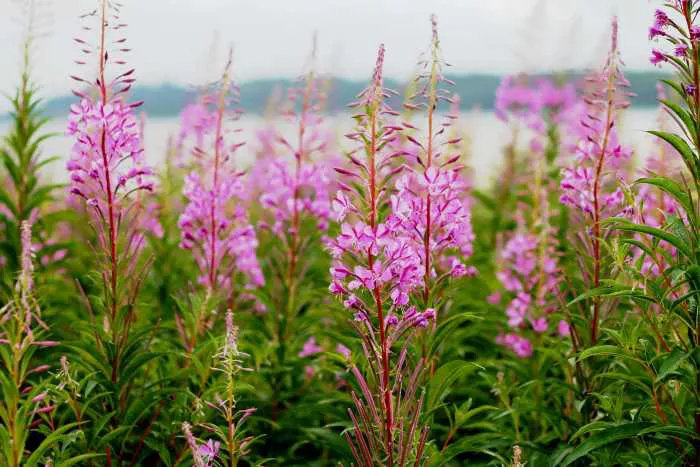Wildflowers are a vital part of our ecosystems, providing beauty and supporting wildlife. Understanding what wildflower seeds look like is essential for those interested in gardening, conservation, or simply appreciating nature. This article will explore the appearance of wildflower seeds, their characteristics, and their importance in the environment.
Introduction to Wildflower Seeds
Wildflower seeds are the reproductive units of flowering plants that grow in natural habitats. They come in various shapes, sizes, and colors, reflecting the diversity of wildflower species. These seeds are crucial for plant reproduction, as they germinate to produce new plants, ensuring the continuation of species.
Wildflower seeds can be found in various environments, including meadows, forests, and along roadsides. Each species has adapted its seed structure to suit its specific habitat and reproductive strategy. By examining the characteristics of wildflower seeds, we can learn more about their role in the ecosystem and how to cultivate them effectively.
General Characteristics of Wildflower Seeds
Wildflower seeds vary widely in appearance, but they share some common characteristics. Most seeds have a hard outer coating known as the seed coat. This protective layer shields the embryo inside from environmental factors such as moisture and temperature fluctuations. The seed coat can be smooth, rough, or even spiky, depending on the species.
The size of wildflower seeds can range from tiny, dust-like particles to larger, more substantial seeds. For example, the seeds of common dandelions are small and lightweight, allowing them to be easily dispersed by the wind. In contrast, the seeds of sunflowers are larger and heavier, often requiring animals or humans for dispersal.
Wildflower seeds also come in various colors. Some seeds are dark brown or black, while others may be light tan or even bright red. The color of the seed can provide clues about its species and its adaptations to specific environments.
California Poppy (Eschscholzia californica)
The California poppy is a well-known wildflower with vibrant orange blooms. Its seeds are small, round, and have a hard outer coat. They are typically dark brown or black in color. California poppy seeds are known for their ability to remain dormant for long periods, allowing them to germinate when conditions are favorable.
Black-eyed Susan (Rudbeckia hirta)
Black-eyed Susan is a popular wildflower with bright yellow petals and a dark center. Its seeds are flat and oval-shaped, with a rough texture. They are light brown to dark brown in color. Black-eyed Susan seeds are often dispersed by animals, which eat the seeds and later excrete them in different locations.
Common Bluebell (Hyacinthoides non-scripta)
The common bluebell is a beautiful wildflower found in woodlands and meadows. Its seeds are small, elongated, and have a smooth surface. They are typically dark brown or black. Bluebell seeds are dispersed by gravity and water, as they tend to fall close to the parent plant.
Wildflower Seed Dispersal Mechanisms
The way wildflower seeds are dispersed is crucial for their survival and propagation. Different species have evolved various mechanisms for seed dispersal, which can influence their appearance.
Wind Dispersal
Some wildflower seeds are adapted for wind dispersal. These seeds are often lightweight and may have structures that allow them to float through the air. For example, dandelion seeds have fluffy, parachute-like structures that help them travel long distances when carried by the wind.
Animal Dispersal
Many wildflower seeds rely on animals for dispersal. These seeds may have hooks or barbs that attach to the fur of animals or be encased in fleshy fruits that attract animals. For example, the seeds of burdock have tiny hooks that cling to animal fur, allowing them to be transported to new locations.
Water Dispersal
Some wildflower seeds can be dispersed by water. These seeds are often buoyant and can float on water surfaces. For example, the seeds of water lilies are adapted to float and can be carried by currents to new areas.
Germination and Growth
After wildflower seeds are dispersed, they need the right conditions to germinate and grow. Factors such as moisture, temperature, and light play a critical role in the germination process. Once conditions are favorable, the seed absorbs water, swells, and eventually breaks through the seed coat. The embryo begins to grow, developing roots and shoots that will eventually form a new plant.
Importance of Wildflower Seeds in the Ecosystem
Wildflower seeds play a vital role in maintaining healthy ecosystems. They contribute to biodiversity, support pollinators, and improve soil health. By planting wildflower seeds, gardeners can create habitats for beneficial insects, birds, and other wildlife.
Wildflowers also help prevent soil erosion by stabilizing the soil with their root systems. Additionally, they improve soil quality by adding organic matter when their leaves and flowers decompose. This process enriches the soil, making it more suitable for other plants.
Conclusion
Understanding what wildflower seeds look like is essential for anyone interested in gardening, conservation, or simply appreciating nature. The diversity of wildflower seeds reflects the adaptability and resilience of these plants. By recognizing the characteristics of different seeds, we can appreciate their role in the ecosystem and the importance of preserving wildflower habitats. Whether you are planting wildflowers in your garden or exploring natural areas, knowing about wildflower seeds enhances your connection to the environment and promotes biodiversity.


